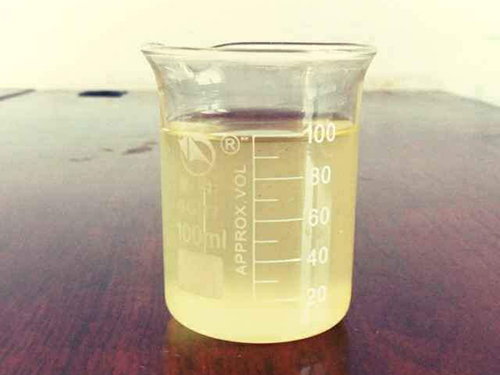Properties and Applications of Polyaluminium Chloride Solutions in Water Treatment
Understanding Polyaluminium Chloride Solution Properties, Applications, and Production
Polyaluminium chloride (PAC) is an inorganic polymer that has gained immense popularity in various industrial applications, particularly in water treatment processes. It is a coagulant used to enhance the removal of colloidal particles and organic matter from water, ensuring that it meets safety and aesthetic standards. The focus of this article is to explore the properties, applications, and production processes of polyaluminium chloride solution.
Properties of Polyaluminium Chloride Solution
Polyaluminium chloride is a complex chemical compound, often represented with the formula Aln(OH)mCl(3n-m), where 'n' refers to the degree of polymerization. When dissolved in water, PAC forms a solution that exhibits several advantageous properties
1. High Coagulation Efficiency PAC offers a superior coagulation effect due to its high charge density. This leads to more efficient particle aggregation, which is essential in wastewater treatment. 2. Solubility Unlike traditional aluminium salts, PAC is more soluble in water, making it easier to handle and apply in various processes.
3. pH Stability The solution maintains a stable pH range, which is crucial for effective treatment processes. Typically, PAC operates effectively between pH 5 and pH 7, ensuring optimal conditions for coagulation.
4. Reduced Sludge Production One of the significant advantages of using PAC is that it tends to produce less sludge compared to other coagulants. This not only minimizes disposal costs but also makes the process more environmentally friendly.
5. Bio-compatibility PAC is generally recognized as safe for use in potable water treatment, and its residuals are less toxic to aquatic life, compared to some alternative chemicals.
Applications of Polyaluminium Chloride Solution
Polyaluminium chloride is widely utilized in various sectors, primarily in water and wastewater treatment facilities
. Its applications include1. Drinking Water Treatment PAC is extensively used to clarify drinking water by removing turbidity, organic matter, and other contaminants. The improved coagulation process leads to cleaner and clearer water, enhancing the quality of the final product.
2. Wastewater Treatment In municipal and industrial wastewater treatment setups, PAC acts efficiently in the removal of suspended solids. Its use helps in meeting regulatory requirements and environmental standards for discharge.
polyaluminium chloride solution

3. Paper Manufacturing In the paper industry, PAC is used as a retention and drainage aid. It helps improve the efficiency of the papermaking process by facilitating better fiber retention and reducing water pollution.
4. Textile Industry The textile sector uses PAC for dye removal and treating wastewater. Its properties help in coagulating and settling the colored particles, thus reducing the environmental impact of dye effluents.
5. Food and Beverage Industry PAC finds applications in the food industry for purifying processes, particularly in beverages, where water clarity is paramount.
Production of Polyaluminium Chloride Solution
The production of polyaluminium chloride involves a straightforward chemical process. Typically, it is synthesized by reacting aluminium hydroxide or aluminium oxide with hydrochloric acid. The general steps may include
1. Preparation of Raw Materials Aluminium hydroxide or aluminium oxide is combined with hydrochloric acid in specified proportions.
2. Reaction The reaction leads to the formation of a polymeric structure, producing polyaluminium chloride in solution form.
3. Filtration and Concentration The solution may undergo filtration to remove any undissolved materials. Subsequently, it is often concentrated to achieve the desired solid content before packaging.
4. Quality Control Rigorous testing is conducted to ensure that the final product meets industry standards in terms of composition and efficacy.
Conclusion
Polyaluminium chloride solution is a versatile and effective coagulant widely used in water treatment and other industrial applications. Its exceptional properties, including high coagulation efficiency and minimal sludge production, make it an optimal choice for enhancing water quality. With growing environmental concerns, the significance of PAC in sustainable practices is likely to continue rising, representing a crucial element in the journey toward cleaner water and a healthier ecosystem.
-
Pbtc Scale InhibitorPBTC: A Scale Protector for Industrial Water TreatmentNewsAug.05,2025
-
Organic Phosphonate: An Efficient Defender in the Field of Scale InhibitionNewsAug.05,2025
-
Hydrolyzed Polymaleic Anhydride: Green Pioneer in Scale Inhibition FieldNewsAug.05,2025
-
PAPEMP Polyamino Polyether Methylene Phosphonic Acid For SaleNewsAug.05,2025
-
Flocculant Water Treatment: A Pioneer in Purification in the Field of Water TreatmentNewsAug.05,2025
-
Benzyl Isothiazolinone: An Efficient and Broad-Spectrum Antibacterial Protective GuardNewsAug.05,2025





